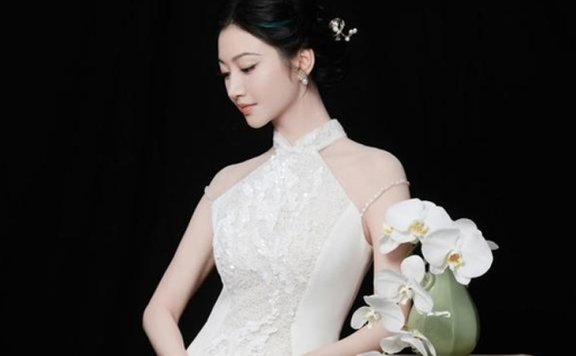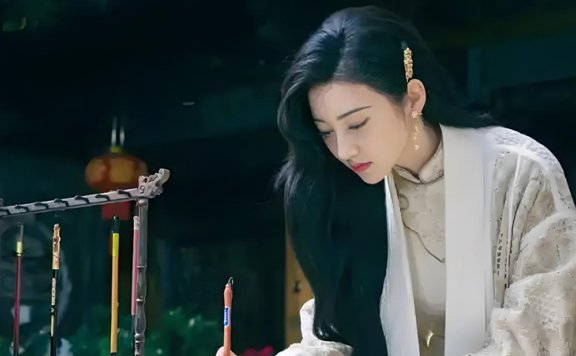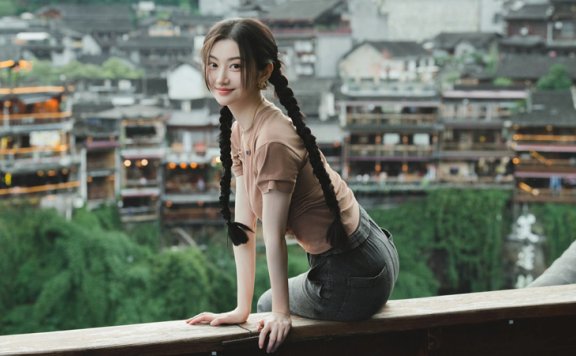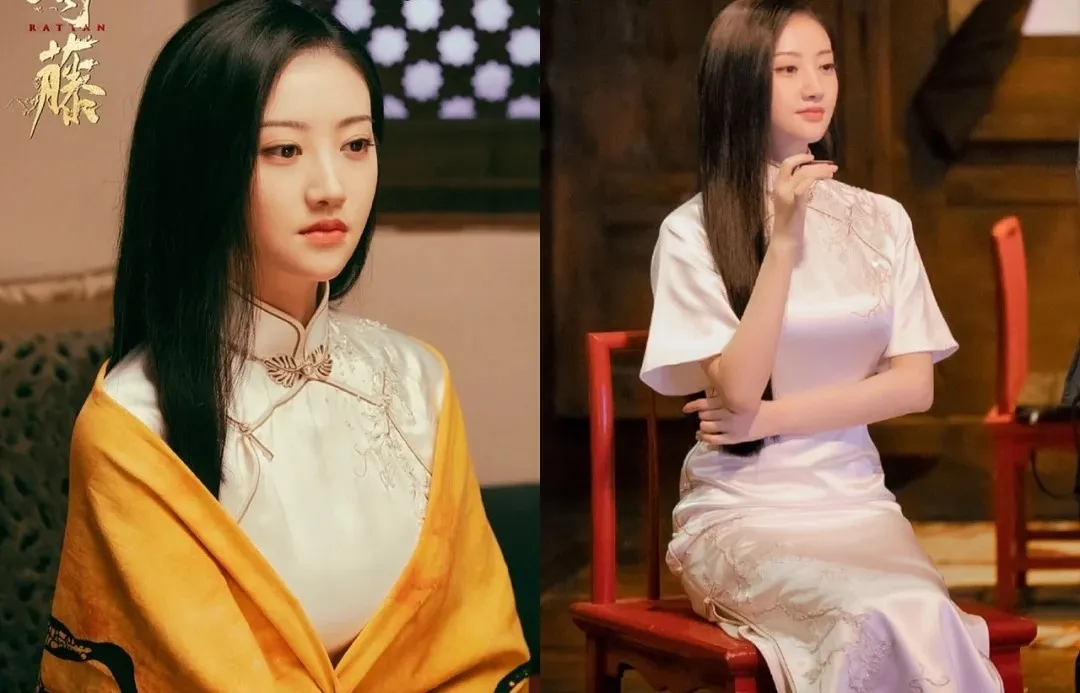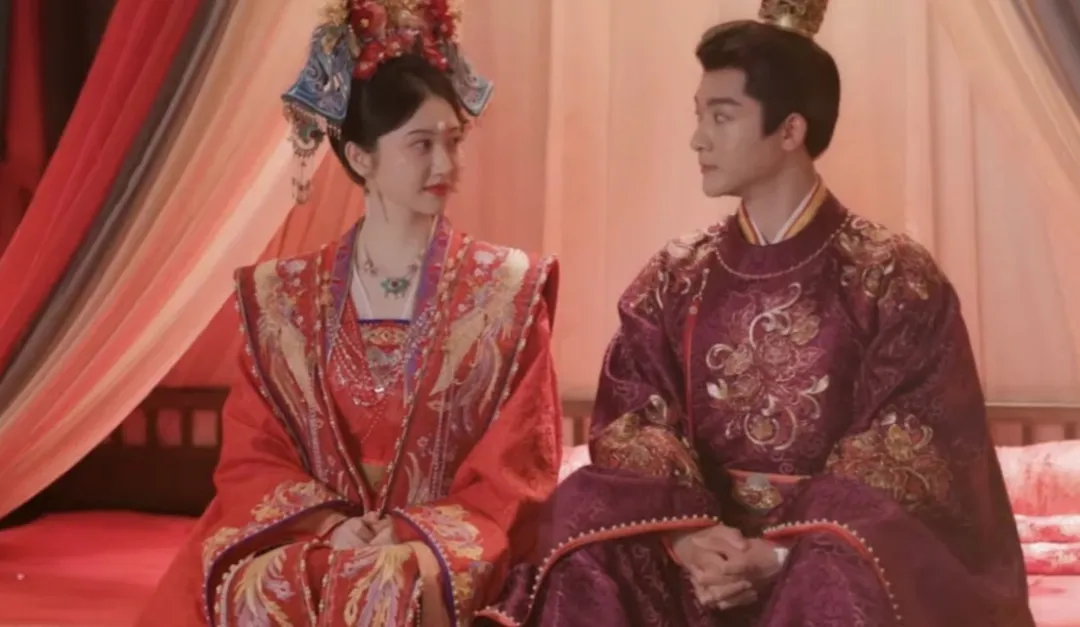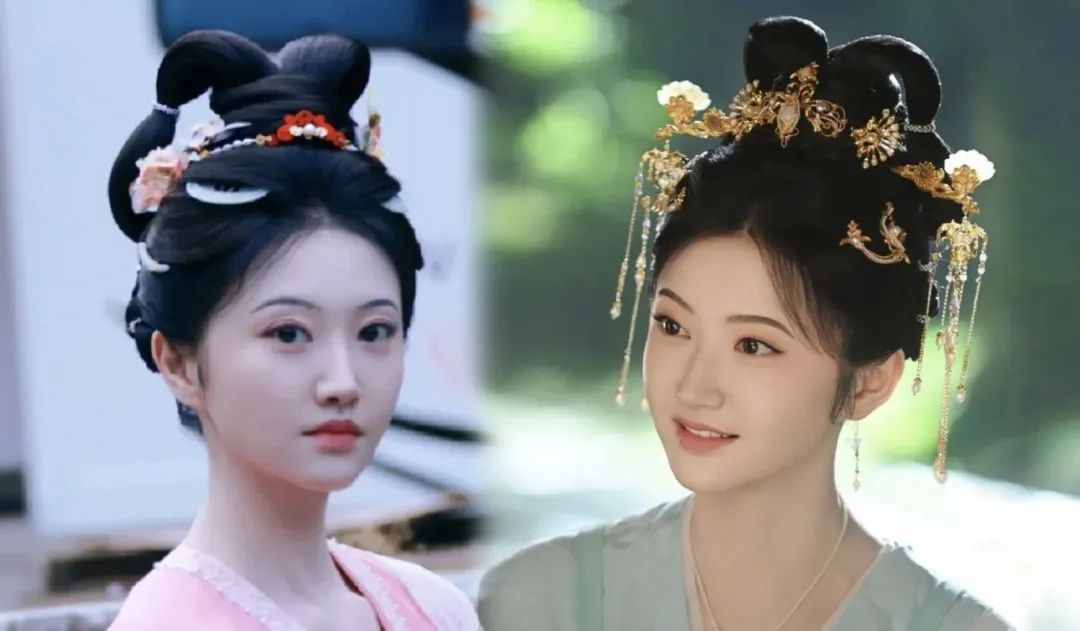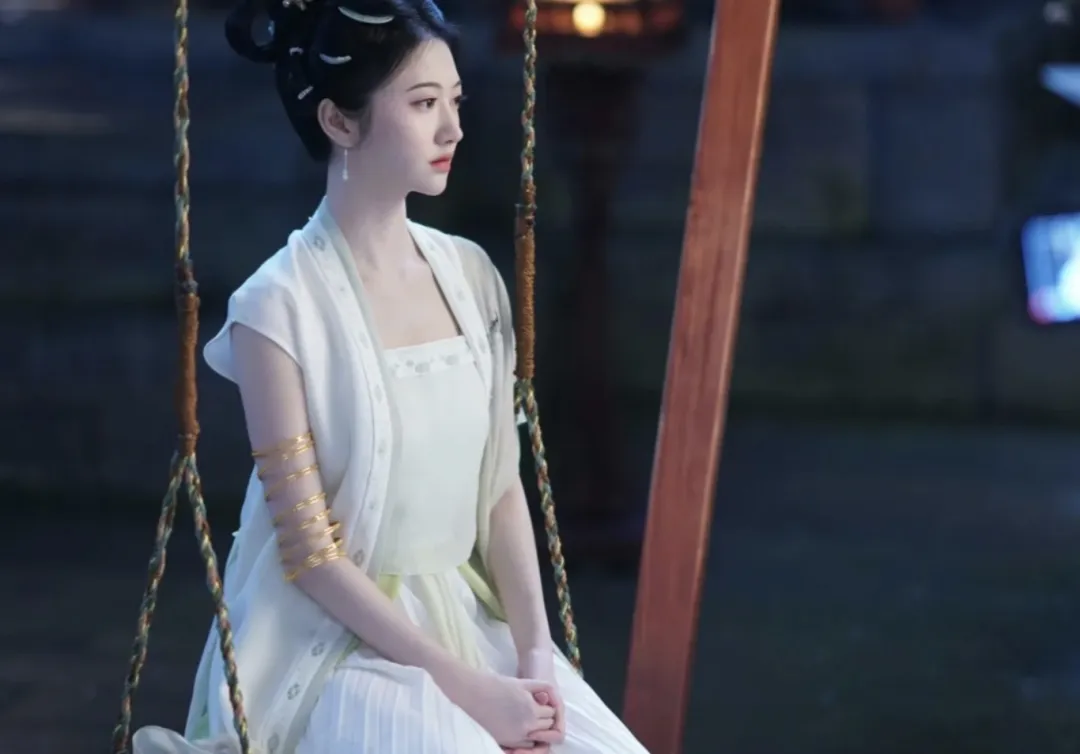-
Jing Tian's White Qipao at Mid-Autumn
How Did Jing Tian's White Qipao Redefine Modern Elegance This Mid-Autumn? In the soft glow of the Mid-Autumn Festival, Jing Tian (景甜), a celebrated Chinese actress, stepped into the spotlight wearing a breathtaking white sheer backless Qipao. This choice immediately captured public attention, blending traditional aesthetics with contemporary design in a way that felt both fresh and deeply rooted. Her appearance wasn't just about fashion; it sparked a broader conversation on how women today navigate age, identity, and style. By opting for a garment that emphasized grace over overt exposure, she challenged typical celebrity norms and invited everyone to rethink what it means to be beautifully confident. This moment served as a cultural touchstone, illustrating how personal style can influence societal perceptions and bridge generational divides. Fashion Evolution Jing Tian's shift to a delicate Qipao represents a notable departure from her earlier roles that often highlighted strength and intensity. This new direction showcases a more refined and approachable side of her persona. The gown's design, with its subtle sheer layers and intricate embroidery, demonstrates how fashion can communicate sophistication without relying on bold statements. It's a conscious move towards expressing maturity and self-assurance, resonating with audiences who appreciate nuance in…- 42
- 0
-
How Does Jing Tian Defy Time? Her Hangzhou Appearance Sparks Wonder
In the vibrant city of Hangzhou, actress Jing Tian (景甜) recently became the center of attention during an advertisement shoot. Dressed in a striking green Qipao and casually wielding a fan, she moved through the mall with an effortless grace that left onlookers in awe. Her skin, noticeably radiant without any digital enhancements, seemed to glow from within, challenging the common narrative of aging in the entertainment world. At 37, she exhibited a freshness often associated with youth, yet paired with the poise of experience. This scene not only highlighted her physical beauty but also ignited discussions about what it means to have a long-lasting "flowering period" in a industry obsessed with novelty. Her relaxed demeanor, as she interacted with fans and handled the summer heat without fuss, added to the allure, making it clear that her appeal goes beyond mere aesthetics. Career Shifts Jing Tian's journey in the spotlight began with high-profile projects that should have cemented her status. She starred in major films like The Great Wall (长城), where she often held central positions thanks to substantial backing. Despite these opportunities, widespread recognition eluded her for years, leading to online criticism labeling her as someone who couldn't break…- 75
- 0
-
Jing Tian's Braids Hairstyle: A Story behind Cdrama Rattan
At 36, Jing Tian (景甜) captivates social media with candid snaps featuring playful braids and radiant smiles. Beyond viral aesthetics, her disciplined lifestyle and strategic career shift post Rattan (司藤) reveal a woman redefining stardom through authenticity and resilience. Her laughter echoes through screens like wind chimes in July—unscripted, bright, and disarming. When Jing Tian uploaded "life snippets" on July 11, 2025, she ignited more than a hashtag; she unleashed a cultural exhale. Against curated perfection dominating feeds, her moss-green skirt and carefree twin braids became emblems of unfiltered joy. Netizens flooded comments: "Her smile healed my burnout," one confessed. Another marveled, "Is she truly 36?" This wasn’t mere vanity—it was a masterclass in rewriting beauty rules through lived experience, not filters. Braids as Rebellion The photos’ power lies in their unstudied grace. Jing’s simple tee and waterfall-side poses reject red-carpet formalism. Her loosely woven braids—practical, nostalgic—symbolize shedding performative glamour. "We chase flawless illusions," a fashion critic noted, "but Jing’s messy authenticity dismantles that." Her crescent-moon eyes and faint dimples amplify this genuineness, making "ageless" less about biology than spirit. Fan reactions reveal deeper yearning. "She reminded me of childhood summers," shared a mother in Chengdu. For Gen-Z followers, Jing’s…- 76
- 0
-
The Diverse Charm of Qipao Beauties, How Could She Be Missing!
In previous features, we discussed the unsurpassable peak in Qipao cinema history—In the Mood for Love. Today, I want to focus on Qipao appearances in TV dramas, highlighting those classic moments where Qipao beauties shone. Each of these beauties has her unique charm, and the Qipao they wore were equally distinctive. In the vast ocean of Qipao styles, external beauty is secondary; the key lies in wearing the Qipao with personal flair and character. First, let's talk about a widely recognized Qipao beauty from recent years—Jing Tian in Rattan (2021). Her portrayal of a vine spirit, set in the Republican era, featured numerous Qipao styles that redefined elegance. The satin Qipao, primarily in pearl white, with its high side slit, atmospheric connected shoulder sleeves, double-round front placket paired with delicate piping and inlaid silk hard flower buttons, exuded both nobility and grace. It was not only light and smooth but also convenient for movement. Paired with Jing Tian's long hair like satin, it combined sexiness and cold beauty. The lace-embellished Qipao in pale blue highlighted her delicate features. The lace perspective showed the female's graceful figure in a hazy and implicit way. With exquisite bead embroidery printing and a small…- 151
- 0
-
Jing Tian's Song Costume Headdress
In the historical drama 'Si Jin,' Jing Tian's wedding headdress has sparked an online debate. Many criticized it for resembling a Qing Dynasty 'qitou.' But is it really a Song Dynasty costume paired with a qitou? The answer is no. This headdress actually comes from the Song Dynasty's 'Chuijian Guan' (Drooping Shoulder Crown), a trendy accessory during the mid - to - late Northern Song period. As recorded in 'Chen Shi,' '...the longer corners droop down to the shoulders, hence called Chuijian.' Similar crowns were known as 'Dengjian' or 'Duojian,' with widths reaching up to two or three chi. People had to turn their heads sideways to enter a carriage because of the crown's width. The character 'Duo' means 'drooping.' Based on the round crown design, this accessory got its name as its sides drooped and were often adorned with gold, silver, pearls, or jade. For instance, Wang Churan's look in 'Serenade of Peaceful Joy' referenced this crown, which reflected her bold personality in the early part of the story. This crown was extremely popular at that time, imitated by people from the imperial court to commoners. 'Dream Pool Essays' described the attire of Li Shishi, a courtesan favored by…- 185
- 1
-
Is This the Only Flattering Hairstyle for Jing Tian?
In the TV series Si Jin, Jing Tian appears with this hairstyle so frequently that it seems to be her signature look. The only variations are the accessories, leading netizens to joke: Is this hairstyle welded onto her head? The hairstyle in question is called Shuang Huan Wang Xian Ji (双鬟望仙髻), an evolved version of the traditional Shuang Huan Ji (双环髻). Originally a youthful hairstyle, its ethereal beauty made it a favorite in classical depictions of celestial beings and noblewomen, as seen in masterpieces like Nymph of the Luo River and Eighty-Seven Immortals. Lin Yun also sported this look in How Can She Be So Charming, albeit with a more exaggerated flair. The difference lies in the evolution of the hairstyle: from the rounded, voluminous buns of the Wei-Jin and early Tang dynasties to the wavier, more dynamic forms of the mid-to-late Tang period. By the Song dynasty, it became a mainstream trend, simplified for daily wear with added pearl embellishments—akin to Jing Tian’s interpretation. Despite its celestial moniker (Wang Xian Ji translates to immortal-aspiring bun), this hairstyle is actually a wig. Crafted with wooden or rattan frames and wrapped in hair, it allowed for versatile styling without the daily…- 182
- 0
-
The Cool and Stylish Sleeveless Garments in Ancient China
The historical drama Si Jin has brought attention to the fascinating clothing culture of ancient China, particularly the sleeveless garments worn by actress Jing Tian. These garments, known as Beixin (背心) or Bijia (比甲), were popular during the Song, Yuan, and Ming dynasties. They were typically worn over other clothing and featured a front-opening design with slits on both sides, extending to below the knees. Archaeological findings from the Southern Song Dynasty, such as those from the Huang Sheng tomb, reveal a variety of sleeveless garments, including Beixin, long and short shirts, two-piece skirts, and more. These garments were lightweight and breathable, making them ideal for summer wear. For instance, one dark peony-patterned Beixin measured 70 cm in length, 44 cm in waist width, and weighed only 16.7 grams—lighter than half a liang (两), a traditional Chinese unit of weight. These sleeveless garments were favored by both noblewomen and commoners. They could be worn alone at home or layered with other clothing for outdoor activities. The Ming Dynasty saw variations like Gua (褂) or Bijia, which could be worn with or without an inner Moxiong (抹胸). The lightweight fabric sometimes revealed the inner garment, adding a touch of color and…- 234
- 0
❯
Profile
Check-in
Message
Message
Search
Contact Us
Scan to open current page
Top
Checking in, please wait
Click for today's check-in bonus!
You have earned {{mission.data.mission.credit}} points today!
My Coupons
-
$CouponsLimitation of use:Expired and UnavailableLimitation of use:
before
Limitation of use:Permanently ValidCoupon ID:×Available for the following products: Available for the following products categories: Unrestricted use:For all products
No available coupons
Daily tasks completed:
